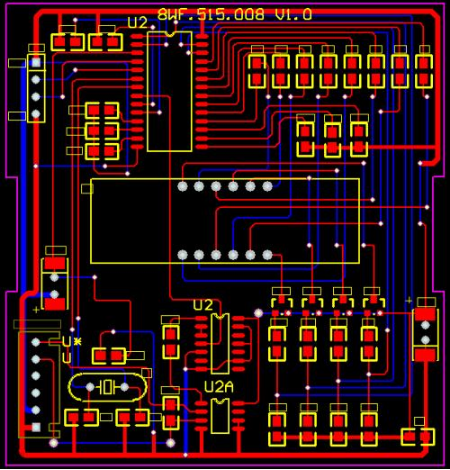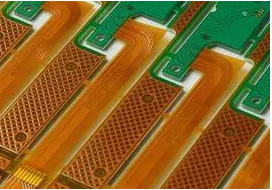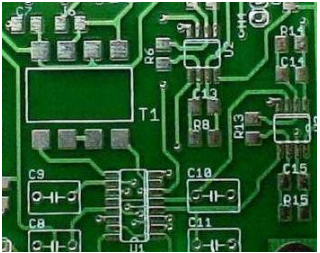
When eliminating unwanted EMI noise, the use of SMD magnetic beads is the best choice for pcb design.
1. In pcb design, the unit of magnetic bead is ohm, not hunt, which should be paid special attention. Since the unit of magnetic bead is nominal according to the PCB impedance generated at a certain frequency, the unit of impedance is also ohm. The DATASHEET of the magnetic bead will generally provide the characteristic curve of frequency and impedance. The standard is 100MHz, for example, 1000R 100MHz, which means that the impedance of the magnetic bead at 100MHz is equivalent to 600 ohms.
2. Ordinary filters are composed of lossless reactance elements. Its role in the pcb design circuit is to reflect the stopband frequency back to the signal source, so this type of filter is also called reflection filter. When the reflection filter does not match the impedance of the signal source, a part of the energy will be reflected back to the signal source, forming the enhancement of the interference level. Pcb is designed to deal with this problem. ferrite magnetic ring or magnetic bead sleeve can be used on the incoming line of the filter, and eddy current loss of high-frequency signal by using zigzag ring or magnetic bead can be converted into heat loss. Therefore, the magnetic ring and magnetic bead actually absorb high-frequency components, so they are sometimes called absorption filters.

Different ferrite suppression PCB components have different optimal suppression frequency ranges. In pcb design, the higher the permeability, the lower the suppression frequency. In addition, the larger the volume of ferrite, the better the inhibition effect. Some researches on the Internet have found that when the volume is fixed, the long and thin shape is better than the short and thick shape, and the smaller the inner diameter is, the better the inhibition effect will be. However, in the case of DC or AC bias, there is also the problem of ferrite saturation. The larger the cross section of the restraint element is, the less likely it is to be saturated, and the greater the acceptable bias current is. When EMI absorbs magnetic ring/magnetic bead to suppress differential mode interference, the current value passing through it is proportional to its volume, and both of them are misadjusted to form saturation, reducing the component performance; When suppressing common mode interference, pass two lines (positive and negative) of the power supply through a magnetic ring at the same time. The effective signal is a differential mode signal. The EMI absorption magnetic ring/magnetic bead has no effect on it, while the common mode signal will show a large inductance. There is also a better way to use the magnetic ring, which is to let the conductor of the magnetic ring pass through repeatedly wind a few times to increase the inductance. According to the principle of its suppression of electromagnetic interference, its suppression effect can be reasonably used.
The ferrite suppression element shall be installed in the center near the interference source. Pcb design should be as close as possible to the inlet and outlet of the shielding shell for the input/output circuit. For the absorption filter composed of ferrite magnetic ring and magnetic bead, in addition to the lossy data with high permeability, attention should be paid to its application site. Their resistance to high-frequency components in the pcb design circuit is about ten to several hundred ω, Therefore, its role in high impedance circuits is not obvious. On the contrary, it will be very effective in low impedance circuits (such as power distribution, power supply or RF circuits).
Ferrite is widely used in EMI control because it can attenuate higher frequencies and let lower frequencies pass through without obstacles. The magnetic ring/magnetic bead used for EMI absorption can be made into various shapes and widely used in various places. If it is on the PCB, it can be added to DC/DC modules, data lines, power lines, etc. It absorbs high-frequency interference signals on the line, but it will not produce new poles and zeros in the pcb design system, and will not destroy the stability of the system. It can be used together with the power filter to supplement the lack of high frequency performance of the filter and improve the filtering characteristics of the system.
Magnetic beads are specially used to suppress high-frequency noise and spike interference on signal lines and power lines. They also have the ability to absorb electrostatic pulses.
Magnetic beads are used to absorb ultra-high frequency signals. For example, some RF circuits, PLLs, oscillation circuits, and circuits containing ultra-high frequency memories (DDR SDRAM, RAMBUS, etc.), magnetic beads are required to be added locally at the power input. Inductors are energy storage components used in LC oscillation circuits, medium and low frequency filtering circuits, etc. Their application frequency range rarely exceeds 50 MHz.
pcb design
The function of the magnetic bead is mainly to eliminate the RF noise existing in the transmission line structure (circuit). The RF energy is the AC sine wave component superimposed on the direct propagation transmission level, the DC component is the useful signal required, and the RF energy is the useless electromagnetic interference transmitted and radiated along the line (EMI). To eliminate these unwanted signal energies, the SMD magnetic beads are used to act as high-frequency resistors (attenuators), which allow DC signals to pass through and filter out AC signals. Usually, the high frequency signal is above 30MHz, but the low frequency signal will also be affected by the patch bead.
SMD beads are composed of soft ferrite data, forming a single stone structure with high volume resistivity. The eddy current loss is inversely proportional to the resistivity of ferrite data. The eddy current loss is proportional to the square of the signal frequency.
Benefits of using SMD magnetic beads: miniaturization and lightweight have high impedance in the RF noise frequency range, eliminating electromagnetic interference in transmission lines. The closed magnetic circuit structure can better eliminate the serial winding of signals. The excellent magnetic shielding structure reduces the DC resistance to avoid excessive attenuation of useful signals. Remarkable high frequency characteristics and impedance characteristics (better eliminate RF energy). Eliminate parasitic oscillation in high-frequency amplification PCB circuit. It works effectively in the frequency range of several MHz to several hundred MHz.
Several suggestions to correctly select the magnetic bead comparison center in pcb design:
1、 What is the frequency range of unwanted signals
2、 Who is the noise source
3、 Whether there is space to place magnetic beads on PCB
4、 How much noise attenuation is required
5、 What are the environmental conditions (temperature, DC voltage, structural strength)
6、 What is the circuit and load impedance
The first three can be identified by looking at the impedance frequency curve provided by the PCB manufacturer. Pcb design is very important in three impedance curves: resistance, inductive impedance and total impedance. The total impedance is described by ZR22 π fL() 2+:=fL. After this curve, select the magnetic bead model that has the maximum impedance within the frequency range of noise attenuation and the minimum signal attenuation under low frequency and DC. The impedance characteristics of the SMD beads will be affected under excessive DC voltage. In addition, if the operating temperature rises too high or the external magnetic field is too large, the impedance of the beads will be adversely affected.
Application sites of medium mount magnetic beads and SMT mount inductors:
Chip inductor: radio frequency (RF) and wireless communication, PCB information technology equipment, radar detector, automobile, cellular phone, pager, audio equipment, PDAs (personal digital assistant), wireless remote control system, low-voltage power supply module, etc.







